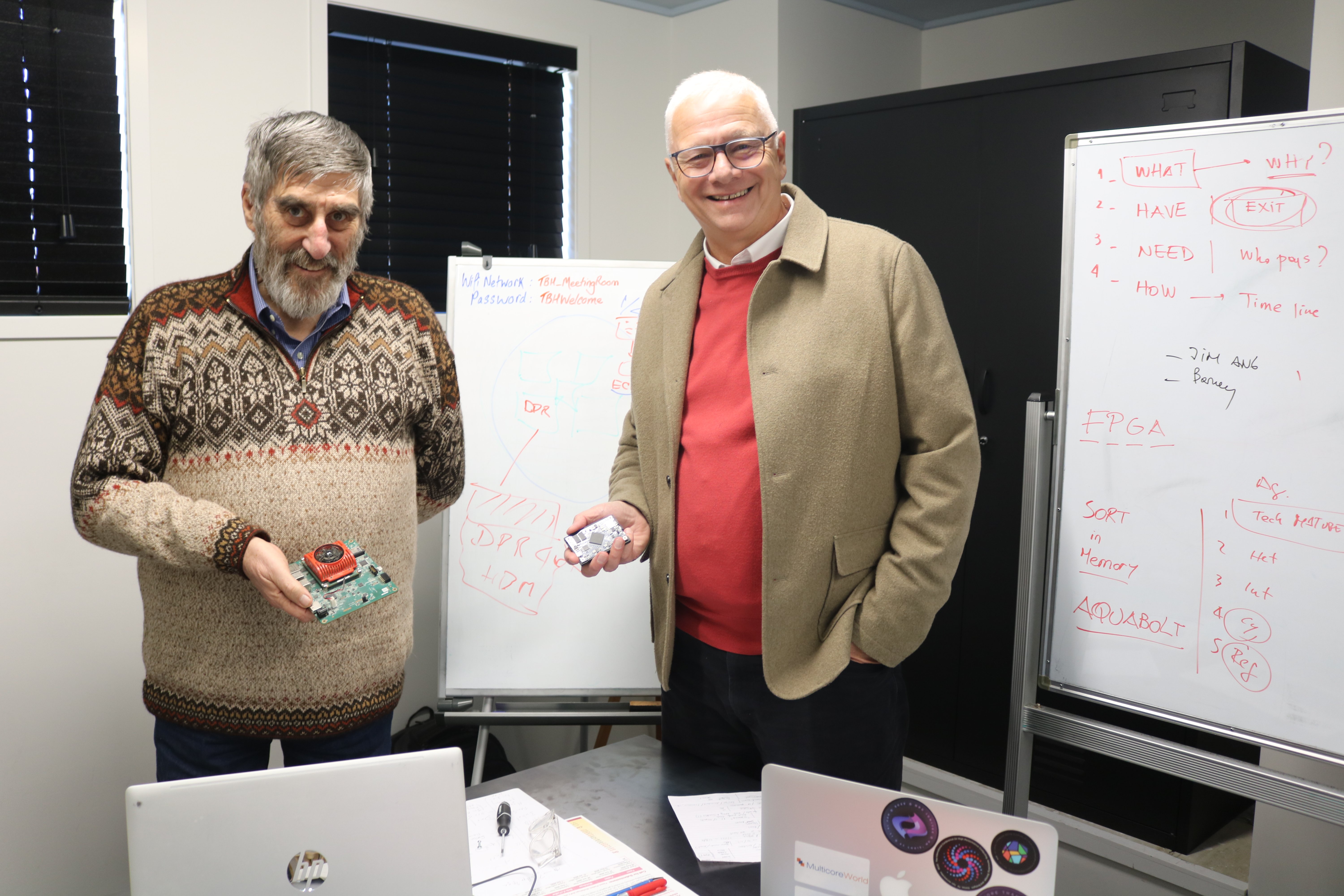Two New Zealand-based IT experts are working on a ground-breaking technology that promises to revolutionise computing by creating a computer inside a computer memory chip.
The innovative project, known as SADRAM (Symbolically Addressing DRAM), is being developed in Oamaru and could dramatically change how data is processed worldwide.
Dr Robert Trout and Nicolas Erdody bring more than a century’s combined experience in information technology to the ambitious endeavour. Dr Trout is the original inventor of SADRAM, a new type of memory chip architecture that can organise, access and even process data internally — without relying heavily on traditional central processing units (CPUs) to micromanage operations.
"This is a paradigm shift," Dr Trout said.
"Instead of the CPU managing every step of data processing, SADRAM moves computing power closer to the memory itself."

"Multicore processors, with multiple CPU cores on a single chip, have been the norm in phones, laptops and supercomputers for decades," he said.
"But this architecture has barely changed in 50 years, and CPUs have hit a performance wall."
Mr Erdody said designers could no longer extract significant improvements or better efficiency using the old designs.
"SADRAM’s architecture addresses these limitations head on."
The new "information architecture and concept" behind SADRAM was designed to boost performance, reduce energy consumption and streamline the computing processes that modern technologies demanded. By embedding computation directly within the memory chip, the technology could reshape everything from artificial intelligence to data centre operations.
Mr Erdody’s company, Open Parallel, was selected in 2012 by the New Zealand government to help design software for the Square Kilometre Array (SKA), the world’s largest radio telescope project.
The company worked on SKA until 2019. He also directs the annual Multicore World Conference held in New Zealand, which attracts leading global thinkers in computing innovation.
Originally from Uruguay, Mr Erdody has lived in Oamaru for over two decades with his family. He met Dr Trout earlier this year at the Multicore World Conference in Christchurch, where the two "like-minded" experts decided to collaborate on further developing SADRAM technology from North Otago.
"We’re jamming like musicians in a band — when like-minded people come together, ideas flow naturally," Mr Erdody said from their shared office space at the Business Hive in Oamaru’s Thames St.
Dr Trout, who hails from Palmerston North but now lives in Hamilton after decades in the United States, holds the worldwide patent for the SADRAM concept.
Over his career, he has built several tech companies and pioneered novel computing architectures. As founder and president of Pico Computing Inc (2004-15), he developed FPGA (field-programmable gate array) products widely used in cryptography, genetic analysis and CPU acceleration.
"FPGAs can outperform conventional CPUs in many specialised tasks," Dr Trout said.
"The real revolution in computing came in the 1970s when the industry shifted from discrete components to printed circuits, separating design from fabrication. This enabled exponential growth in computing power for the past 50 years."
But he warns: "We are now hitting physical and quantum limits. We cannot keep squeezing more performance from the same old CPU-centric design."
The pair are focused on designing cost-effective technology to overcome these challenges. Their plan includes creating a company, hiring experts and developing hardware kits — either manufacturing them or licensing the design to major industry players such as Samsung.
"The big picture is to build a design centre in New Zealand that proves cutting-edge tech can be developed anywhere. We want to inspire future generations to innovate locally with global impact," Mr Erdody said.













